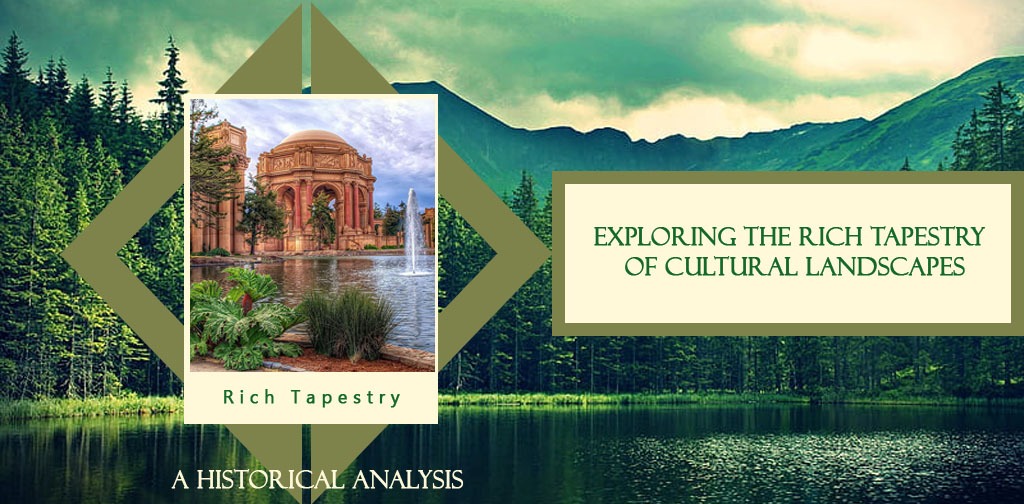Introduction
Cultural landscapes
are a testament to the dynamic interplay between humans and their environment,
embodying the collective history, values, and practices of societies over time.
At Guinness Press, we are dedicated to delving into the intricate stories these
landscapes tell. This blog explores the concept of cultural landscapes, their
historical significance, and the innovative methods researchers use to study them.
What Are Cultural Landscapes?
Cultural landscapes
are geographic areas where human activity has significantly shaped the natural
environment. These landscapes can range from agricultural terraces and rural
villages to urban centers and sacred sites. Each landscape is a palimpsest,
revealing layers of human interaction, adaptation, and transformation over
centuries.
The Importance of Historical Analysis
Understanding
cultural landscapes through historical analysis allows us to:
- Preserve Heritage: Identifying and
protecting culturally significant sites for future generations.
- Inform Sustainable Practices: Utilizing traditional
knowledge to guide contemporary environmental stewardship.
- Foster Cultural Identity: Recognizing and valuing
the historical roots that shape community identities.
- Encourage Interdisciplinary Research: Bridging fields like
history, archaeology, geography, and anthropology for a holistic
understanding.
Methodologies in Historical Analysis
Researchers employ a
variety of methodologies to uncover the rich histories embedded in cultural
landscapes:
1. Archival Research
Archival research
involves examining historical documents, maps, photographs, and other records
to trace the development of landscapes. These materials provide context and evidence
of how land use, architecture, and community practices have evolved.
Example: Historical maps of rural
England reveal the transformation of agricultural fields and the impact of
industrialization on rural communities.
2. Archaeological Investigations
Archaeology provides
physical evidence of past human activity through artifacts, structures, and
settlement patterns. Excavations and surveys help reconstruct historical
landscapes, offering tangible connections to the past.
Example: Excavations in the ancient
city of Pompeii uncover residential layouts, public spaces, and artifacts,
providing a snapshot of Roman urban life before the eruption of Mount Vesuvius.
3. Oral Histories
Oral histories
capture personal narratives and cultural knowledge that may not be documented
in written sources. Ethnographic interviews with community members provide
valuable insights into the social and cultural dimensions of landscapes.
Example: Interviews with Indigenous
elders in Canada reveal traditional ecological knowledge and the significance
of sacred sites within their cultural landscapes.
4. Geospatial Technologies
Geospatial
technologies like Geographic Information Systems (GIS) and remote sensing allow
researchers to analyze spatial data and visualize changes over time. These
tools identify patterns and relationships that enhance our understanding of
historical landscapes.
Example: GIS analysis of settlement
patterns in the Maya Lowlands helps researchers understand the spatial
organization and agricultural practices of ancient Maya civilization.
Case Studies of Cultural Landscapes
1. The Rice Terraces of
Ifugao, Philippines
The Ifugao Rice
Terraces, a UNESCO World Heritage site, exemplify sustainable agricultural
practices developed over 2,000 years. These terraces reflect the Ifugao
people’s sophisticated irrigation systems and deep cultural connection to the
land.
2. The Historic Urban
Landscape of Istanbul, Turkey
Istanbul’s cultural
landscape is a mosaic of Byzantine, Ottoman, and modern influences. From
ancient churches and mosques to bustling bazaars and contemporary architecture,
Istanbul’s landscape tells the story of its rich and diverse history.
3. The Sacred Groves of India
Sacred groves are
patches of forest preserved for religious and cultural reasons across India.
These groves are biodiversity hotspots and repositories of traditional
ecological knowledge, maintained through generations of cultural practices.
The Significance of Studying Cultural Landscapes
Exploring cultural
landscapes through historical analysis not only preserves our shared heritage
but also provides insights into sustainable practices and cultural identities.
These landscapes are living records of human ingenuity and resilience, offering
lessons for contemporary and future generations.
Conclusion
Cultural landscapes
are invaluable archives of human history and culture. Through meticulous
historical analysis, we can uncover the rich tapestries woven by generations of
human interaction with the environment. At Guinness Press, we celebrate and
support the exploration of these landscapes, fostering a deeper appreciation of
our collective past.
